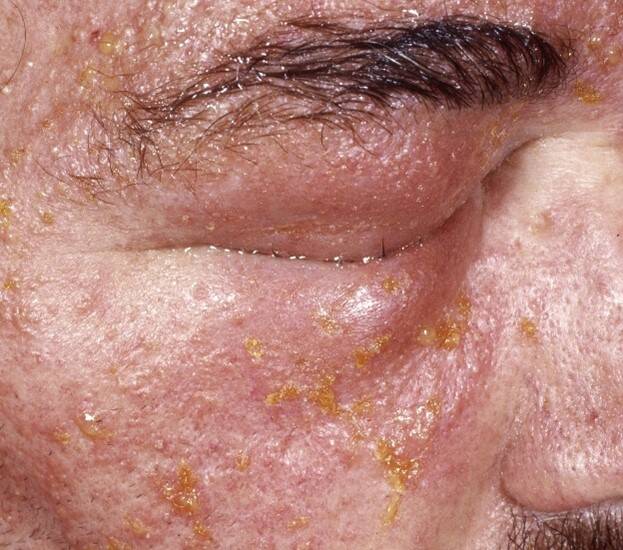Monographs in contact allergy Volume 3: Topical drugs
After I finished Volume 2 on fragrance ingredients and essential oils, I started writing Volume 3 in January 2019 on topical and systemic drugs. I thought I could finish this book in about 9 months, but boy, was I wrong! After 1 year and 9 months I did have a manuscript ready, but it was only about topical drugs! The subject of systemic drugs (systemic medicines: tablets, capsules, injections, etc.) turned out to be so extensive that the book would count at least 1800 pages. So I suggested to my contact at the publisher, Hilary, that the systemic drugs should be presented in a new book, Volume 4, and she agreed. I was happy, because I could finish one task (the topical drugs) sooner and there would also be an extra book!
Topical drugs (topical = local) are medicines that are applied to the skin and mucous membranes (eyes, nose, mouth, genitals and anus) in the form of ointment, cream, lotion, powder, eye drops, nose drops, etc. Contact allergy to it (also called delayed-type hypersensitivity or type IV hypersensitivity) has been known for a long time and is well documented. The most important of those local medicines that cause contact allergy are antibiotics, corticosteroids ('hormone ointments', for example for the treatment of eczema or psoriasis) and local anaesthetics, which give 'anaesthesia' of the skin, for example in case of pain, itching or burning.

Acute allergic contact eczema due to eye drops with severe edema of the eyelids; the yellow crusts indicate a secondary infection with Staphylococcus aureus

Systemic contact dermatitis. This patient had become allergic to a corticosteroid (adrenal cortex hormone) due to the use of a hormone ointment for eczema. When she later started using an inhaled corticosteroid for nasal congestion, a drug exanthema developed in the major body folds. This also often shows a bright red erythema on the buttocks, which has led to the name 'baboon syndrome', named after the red bottom of baboons
These topical drugs usually cause localized allergic contact eczema at the site where the ointment, cream, lotion, drop or spray has been applied; sometimes the eczema spreads to other places. In some cases, so much of the drug is absorbed through the skin or mucous membrane that it enters the bloodstream, spreads throughout the body and then causes extensive eczema or other skin rashes; this is called 'systemic contact dermatitis' or 'systemic allergic dermatitis'. This phenomenon is mainly seen with administration of corticosteroids in the nose and lungs (by inhalation) and with the use of local anaesthetics for haemorrhoids, itching or eczema of the anus. It can also arise when systemic drugs are administered to patients who have previously become allergic to this drug by the application in a topical drug to the skin or mucous membranes.

Volume 3 of the Monographs in contact allergy series appeared in March 2021. After that I wrote two review articles on the topic of Topical drugs:
- De Groot AC. Contactallergie voor lokale geneesmid-delen: klinische beelden. Ned Tijdschr Derm Venereol 2021;31(5):26-30
- De Groot AC. Allergic contact dermatitis from topical drugs: An overview. Dermatitis 2021;32(4):197-213
The first article is shown below, you can also download it.
It was not until August 2022 that a book review was published in Dermatitis (2022;33[4]:e51). The conclusion was: 'This reference book is a ''must-have'' for clinicians, scientists, and all professionals involved in caring for patients with eczematous and occupational dermatoses and practice patch testing'.
A book review had previously been published on the website of the European Society of Contact Dermatitis (www.escd.org) written by Thomas Rustemeyer, professor of occupational dermatology in Amsterdam (and a friend of mine, I should add right away).
Book review on the website of the ESCD
Monographs in Contact Allergy, Volume 3: Topical drugs
This book on contact allergy to topical drugs, which is available as both printed and eBook, is the third in the Monographs in Contact Allergy series written by Anton de Groot. Our department has the previous volumes (1: Non-fragrance allergens in cosmetics, 2: Fragrances and essential oils) in our library and they are frequently consulted. This is again a unique book, packed with practical and easily accessible information, which is up-to-date to August 2020, Anton told me. The incredibly short production time of the book was possible, as the author has again formatted the text completely by himself and all the publisher had to do was to have it printed.
After an introductory chapter, De Groot in chapter 2 gives an overview of all aspects of allergic contact dermatitis from topical drugs, including prevalence, predisposing factors, clinical manifestations, the allergens, cross-reactivity and diagnostic procedures. Chapter 3 shows the monographs of topical drugs, 369 in total. These fully discuss the available literature on contact allergy/allergic contact dermatitis to each drug in the same format as the previous volumes.
Chapter 4 presents over 150 non-pharmaceutical ingredients of topical drugs that have caused sensitization, e.g. parabens, thimerosal, lanolin alcohol, propylene glycol, fragrances, essential oils, et cetera. Some of these ingredients could never be found by a search in PubMed or any other database. Chapter 5 shows drugs that have caused contact urticaria. Very original is chapter 6, in which the author gives a preview of the drugs that will be discussed in Volume 4 on Systemic drugs. Anton told me that he had originally planned to present the topical and systemic drugs in one volume, but he soon discovered that the subject was far too large for one book. Apparently, he has already found 500 drugs that have caused one or more types of cutaneous adverse drug reaction (e.g. DRESS, AGEP, SDRIFE, fixed drug eruption, maculopapular eruptions) caused by delayed-type hypersensitivity or occupational allergic contact dermatitis. Something to look forward to!

